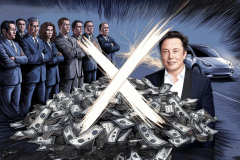Federal guidelines for autonomous cars on public roads are in the works, and U.S. Transportation Secretary Anthony Foxx provided some rough outlines on the focus points for rules and regulations.
Speaking at the 2016 Automated Driving Symposium, Foxx told attendees that we need “to take the the safety aspects of this very seriously” and cautioned that “autonomous does not mean perfect”.
See Also: Highway ban squeezes lanes for China’s self-driving car industry
He provided a vague outline of how the department plans to engage automakers, tech firms, and the public, promising open dialogue between all three and flexible laws to keep up with innovation.
Foxx mentioned “pre-market approval steps” for autonomous car vendors, which could be similar to the legislation introduced during the Queen’s Speech in U.K. Parliament, allowing verified automakers to test cars on public roads and sell cars with semi-autonomous features.
He also commented on the ongoing Tesla fatal crash debate, stating that while people should follow the instructions provided by the car manufacturer, the manufacturer should also put in extra safety features to ensure audacious drivers don’t meet a similar end.
A lot of uncertainty on federal regulations
The Department of Transportation (DOT) has been talking in earnest about autonomous vehicle regulations for the last few months. The DOT’s National Highway Traffic Safety Administration (NHTSA) agency said in July that overarching regulation was imminent. Then, weeks later, the agency said it wouldn’t overrule state laws that were being considered, potentially leaving automakers and buyers with a patchwork of different laws between states — or even within states, between cities.
has been working with Google, General Motors, and a few other companies to frame the guidelines. It is still unknown how much red tape Foxx and his team will cut, but we expect the department to be cautious in light of recent events.
Automakers are preparing to fit their next generation of cars with some autonomous features, remote driving on private property, self-parking, and highway lane switching are three of the main new features coming to some cars in 2017 and 2018.
It won’t be until 2020 when we see “driverless cars” enter the spotlight, and even then, it might be a few more years before regulators approve of the cars for public use. In a blog post, Tesla’s CEO Elon Musk put forward his ten-year plan and in it he said reaching the fully autonomous stage will be difficult due to regulatory and public pressure.


















